This article was co-authored by Claudia Carberry, RD, MS. Claudia Carberry is a Registered Dietitian specializing in kidney transplants and counseling patients for weight loss at the University of Arkansas for Medical Sciences. She is a member of the Arkansas Academy of Nutrition and Dietetics. Claudia received her MS in Nutrition from the University of Tennessee Knoxville in 2010.
There are 16 references cited in this article, which can be found at the bottom of the page.
This article has been viewed 76,607 times.
Your diet can be thrown off balance or you may have difficulty maintaining your weight if your portions get too big. Many people will use a food scale or a measuring cup to be more accurate with portion control. However, it's not realistic to whip out a food scale every time you sit down for a meal. You'll need to guess or estimate what an appropriate portion size looks like. Luckily there are a few tricks that you can use to help you estimate portion sizes with a good deal of accuracy.
Steps
Guessing What a Portion Size Looks Like
-
1Compare measured servings to your hands. One easy way to estimate portion sizes of foods is by using your hands. Since it's a part of your body, it's a very convenient measuring tool even if you're out at fancy restaurant.[1] However, everyone's hands are different, so practice measuring out portions first and compare them to your hands to get an idea of what they should look like. Use these guidelines when trying to estimate a portion size:
- 2 cups will fit into your hands if they were cupped together. This should generally be the size of your total meal.
- 1 cup or 8 oz is equivalent to your fist. If you have large hands, your fist might equal 10 oz or slightly more than a cup.
- 1/2 cup or about 4 oz is the size of one cupped palm.
- 3 oz is about the size of your palm.
- 1 tablespoon is the size of the tip of your thumb.
- 1 teaspoon is the size of the tip of your pointer finger.
-
2Think of your favorite sporting items. If you have larger hands or want to use other objects to help give you a better visual of portion sizes, try using some of your favorite sporting items. Try:[2]
- 2 cups will be about the size of a softball.
- 1 cup or about 8 oz is the size of a baseball.
- 1/2 cup or about 4 oz is the size of a tennis ball.
- 2 tablespoons is the size of a golf ball.
- 1 oz is the size of 4 dice.
Advertisement -
3Divide your plate. Another way to help you see not only what portion sizes you should eat, but how they should fit into your entire meal, is by using the plate method.[3] Divide a 10-inch plate so that:
- A quarter of the plate is reserved for protein-based foods.
- Another quarter of the plate should be left for starch-based foods.
- The remaining half of the plate should be divided between fruits and vegetables.
- Note that fruit shouldn't make up a full half of the plate. At most it should be about a quarter of the plate. Vegetables, however, can be the entire half of the plate.
-
4Practice measuring out portions. To improve your ability to estimate a portion when you see it, practice portioning it out at home. Use measuring cups and a food scale to measure out various types of food portions for your meals for one week and pay attention to what the portions look like. Then, measure out portions for one day each week to help calibrate your ability to recognize portion sizes.[4]
Following the Portion Size Guides for the Food Groups
-
1Aim for 3-4 oz of protein-based foods. Each food group comes with its own recommendations on portion size. Protein-based foods, even nutritious ones, still need to be measured and portion controlled.[5]
- In general, if you're measuring or eyeballing protein-based foods, aim for about a 3-4 oz or about a 1/2 cup portion per serving.[6]
- If you're estimating this portion size, this will be one small palm full, the size of your checkbook or about the size of a deck of cards.
- For example, 3-4 oz of chicken, pork or fish is a serving and one and a half to two eggs is a serving.
- Nuts, although a protein-based food, are higher in fat and come with a smaller serving suggestion. If you're eating nuts, measure out 1 oz of nuts per serving.
- In general, adults should aim for about two 3-4 oz servings of protein-based foods each day.
-
2Eat a 1 or 2 cup serving of dairy. Dairy is a food group that contains a high amount of protein. However, dairy products are still separated into a different food group and have different serving size recommendations.
- When you're having a diary based food, serving sizes can vary. Measure 8 oz of liquid dairy and between 1-2 cups of other forms of dairy products.
- For milk and yogurt, the serving size is 1 cup. If you're eating cottage cheese, the serving size is 2 cups. If you're going to have cheese (like cheddar cheese), the serving size is 2 oz.[7]
- If you're estimating these portion sizes, 1 cup of yogurt will be about the size of your fist and if you're measuring cheese it'll be the size of a golf ball for a piece, or the size of a CD for a slice.
- In general, adults should aim for about 3 cups of dairy each day. This does not include high fat dairy options, such as ice cream and butter.
-
3Eyeball 1 cup of vegetables. Vegetables are a nutrient dense food group that's low in calories and high in vitamins, fiber and antioxidants. Although these foods are very healthy, you still should estimate your portion sizes.[8]
- Vegetables are divided into two different groups - dense vegetables and leafy green vegetables. In general, estimate 1 cup for the denser vegetables and 2 cups for those leafy green vegetables.
- Denser vegetables like broccoli, peppers or beans should be measured at 1 cup. However, if you're going for salad greens like kale or romaine, you should measure out 2 cups per serving.
- In general, adults should aim for about 3 cups total of vegetables each day.
-
4Go for about 1/2 cup of fruit. Fruit, like vegetables, are another very nutritious group. And although they are also lower in calories and high in nutrients, they still need to be portion controlled.[9]
- There are a few ways to measure fruit depending on what form it's in. If you have a whole piece of fruit or cut fruit your portion will be a 1/2 cup. It should be about the size of a tennis ball or computer mouse.[10]
- If you're having dried fruit, the portion is smaller. This is because the water has been evaporated out of the fruit leaving behind a higher sugar dried fruit.
- The portion size for dried fruit is about a 1/4 cup. This is equivalent to two golf balls or about the size of an egg.
- In general, adults should aim for about 2 cups of fruit each day.
-
5Aim for 1 oz of grains. There are a few ways to measure grains depending on what form they're in. Make sure you account for what you're eating when you're estimating portion sizes.[11]
- In general, you only want to eat about 1 oz of grains per serving. If you're eating foods like rice or pasta, your portion size will be about a 1/2 cup.[12]
- For example, if you're eating pasta, you want to eat a 1/2 cup serving which will be about the size of a tennis ball. However, if it's uncooked, you want to go by ounces instead.
- Other 1 oz serving examples include: 1 slice of bread, 1/2 of an English muffin, 1/2 cup of cooked oatmeal or 1 cup of unsweetened cereal.
- In general, adults should aim for about 5-7 one oz servings of grains each day.
-
6Eat 1-2 tablespoons of added fat. Although not a food group per se, fats also come with recommended portion sizes. These are essential since fats are high in calories.
- In general, it's recommended to have no more than 6-7 teaspoons of fat each day.[13]
- Note that when you're measuring or estimating the portion size of fats, the recommendations are given in tablespoons. There are 3 teaspoons per tablespoon.
- If you were going to drizzle olive oil over a salad, the recommended serving size is 1 tablespoon (14.8 ml). Or if you were going to spread mayo on your sandwich, one serving of mayo would be 1 tablespoon. This is about the size of your thumb.
Controlling Portion Size
-
1Read food labels. If you're trying to focus more on portion sizes, you need to go beyond just estimating portions of your foods. When you're shopping or eating packaged goods, serving information is provided which can give you additional guidance on how much to eat.[14]
- Packaged foods, like cereal, crackers, soup or salad dressing, will have the nutrition fact panel and ingredient list on the side of the product. This is where you will find the serving size information.[15]
- Look at your food product and find the nutrition label. The serving size is listed at the top left of the label.
- The label will provide the serving size in two measurements. It might list a cup measurement, ounces or pieces. It'll also list the serving in a gram amount as well.
- The label will also tell you how many servings the entire package or container contains. This is helpful if you need to eyeball a serving.
- For example, if a tub of yogurt says it contains 3 servings, it might be easier to just guess what a third of the tub is, rather than trying to remember what 1 cup looks like.
-
2Use smaller plates and utensils. Estimating portion sizes can be difficult (especially if you're new at doing this). If you're using a large plate, this can make portion sizes seem smaller than they are and lead to more inaccuracies in your estimation.[16]
- Studies have shown that if you eat off of a typical size dinner plate, which can be 12 inches (30.5 cm) or even bigger, you're more likely to overeat. It looks like there is less food on a bigger plate which makes it tempting to overeat.
- Even if you're using your fist to estimate portion sizes, the extra space on the plate can trick your eyes.
- Instead of those typical dinner plates, use a salad plate or appetizer plate instead. They're smaller and can make an appropriate serving of food look larger than it is.
-
3Eat pre-packaged food items. Another easy way to make sure you're sticking to an appropriate portion size is by eating pre-packaged items. Let the store do the work for you.[17]
- If you have difficulty estimating correct portion sizes, try purchasing more pre-packaged or individual items. They're already pre-portioned for your convenience.
- For example, instead of buying a larger container of yogurt and estimating what 1 cup looks like, purchase the individual yogurt cups. No estimating required.
- You could also buy pre-sliced cheese instead buying cheese in a block. They're already sliced into the correct portion size.
- Note, not all pre-portioned items provide one serving. Always check the nutrition panel to see how many servings are per container. If it's more than one, you should account for eating more than 1 serving.
-
4Measure your dishes and cookware. Measuring your foods everyday, 3 meals a day can get difficult and frustrating. Make life easier by doing the work one time only.
- If you have bowls, cups or silverware that you use on a regular basis, you can measure them ahead of time to know exactly how much these items hold.[18]
- For example, if you love soups, measure out your ladle. Your ladle may hold a 1/2 cup. You know that if you give yourself two ladles of soup, your total serving will be about 1 cup.[19]
- If you bring lunch to work on a regular basis, measure out your to-go or tupperware containers. For example, you might have a big tupperware for your lunch-time salads. Measure out how many cups of salad actually fit in there.
-
5Split restaurant items. Many of the times you'll need to estimate a portion size is when you're eating out. Most people aren't going to bring their food scale or measuring cups, so estimating will be a must.[20]
- Most restaurants are serving portions of food that are much larger than recommended. In addition, many people are ordering an appetizer, larger entree and even dessert. This makes the overall portion size of the meal overly large as well.
- To help cut down on these sneaky big portions, start splitting items. If you split an entree, you're automatically cutting down the portion size and getting closer to an appropriate serving.
- You can also try ordering an appetizer for your main meal as well. Appetizers are generally smaller and most likely closer to a normal portion size.
- You may even want to choose to order items a la carte. For example, get a side salad and order a grilled chicken breast to go on top.
Expert Q&A
Did you know you can get expert answers for this article?
Unlock expert answers by supporting wikiHow
-
QuestionWhat is the correct portion size of food?
 Claudia Carberry, RD, MSClaudia Carberry is a Registered Dietitian specializing in kidney transplants and counseling patients for weight loss at the University of Arkansas for Medical Sciences. She is a member of the Arkansas Academy of Nutrition and Dietetics. Claudia received her MS in Nutrition from the University of Tennessee Knoxville in 2010.
Claudia Carberry, RD, MSClaudia Carberry is a Registered Dietitian specializing in kidney transplants and counseling patients for weight loss at the University of Arkansas for Medical Sciences. She is a member of the Arkansas Academy of Nutrition and Dietetics. Claudia received her MS in Nutrition from the University of Tennessee Knoxville in 2010.
Master's Degree, Nutrition, University of Tennessee Knoxville Master's Degree, Nutrition, University of Tennessee KnoxvilleExpert Answer
Master's Degree, Nutrition, University of Tennessee KnoxvilleExpert Answer -
QuestionHow big is 4 oz of fish?
 Claudia Carberry, RD, MSClaudia Carberry is a Registered Dietitian specializing in kidney transplants and counseling patients for weight loss at the University of Arkansas for Medical Sciences. She is a member of the Arkansas Academy of Nutrition and Dietetics. Claudia received her MS in Nutrition from the University of Tennessee Knoxville in 2010.
Claudia Carberry, RD, MSClaudia Carberry is a Registered Dietitian specializing in kidney transplants and counseling patients for weight loss at the University of Arkansas for Medical Sciences. She is a member of the Arkansas Academy of Nutrition and Dietetics. Claudia received her MS in Nutrition from the University of Tennessee Knoxville in 2010.
Master's Degree, Nutrition, University of Tennessee Knoxville Master's Degree, Nutrition, University of Tennessee KnoxvilleExpert Answer
Master's Degree, Nutrition, University of Tennessee KnoxvilleExpert Answer -
QuestionHow do they determine serving size?
 Claudia Carberry, RD, MSClaudia Carberry is a Registered Dietitian specializing in kidney transplants and counseling patients for weight loss at the University of Arkansas for Medical Sciences. She is a member of the Arkansas Academy of Nutrition and Dietetics. Claudia received her MS in Nutrition from the University of Tennessee Knoxville in 2010.
Claudia Carberry, RD, MSClaudia Carberry is a Registered Dietitian specializing in kidney transplants and counseling patients for weight loss at the University of Arkansas for Medical Sciences. She is a member of the Arkansas Academy of Nutrition and Dietetics. Claudia received her MS in Nutrition from the University of Tennessee Knoxville in 2010.
Master's Degree, Nutrition, University of Tennessee Knoxville Master's Degree, Nutrition, University of Tennessee KnoxvilleExpert Answer
Master's Degree, Nutrition, University of Tennessee KnoxvilleExpert Answer
Warnings
- Estimating portion sizes is not as accurate as measuring them out.⧼thumbs_response⧽
References
- ↑ https://www.siue.edu/campus-recreation/facilities/EstimatingPortionSizesUsingYourHands.pdf
- ↑ https://www.siue.edu/campus-recreation/facilities/EstimatingPortionSizesUsingYourHands.pdf
- ↑ https://medlineplus.gov/ency/patientinstructions/000337.htm
- ↑ https://medlineplus.gov/ency/patientinstructions/000337.htm
- ↑ https://www.heart.org/en/health-topics/caregiver-support/what-is-a-serving
- ↑ https://www.myplate.gov/eat-healthy/protein-foods
- ↑ http://www.choosemyplate.gov/dairy
- ↑ https://www.myfooddiary.com/resources/estimating_serving_sizes.asp
- ↑ https://www.myfooddiary.com/resources/estimating_serving_sizes.asp
- ↑ http://www.choosemyplate.gov/fruit
- ↑ https://www.myplate.gov/eat-healthy/grains
- ↑ http://www.choosemyplate.gov/grains
- ↑ http://www.choosemyplate.gov/oils
- ↑ https://www.fda.gov/food/new-nutrition-facts-label/how-understand-and-use-nutrition-facts-label
- ↑ http://www.eatright.org/resource/food/nutrition/nutrition-facts-and-food-labels/the-basics-of-the-nutrition-facts-panel
- ↑ https://www.eatright.org/food/nutrition/nutrition-facts-and-food-labels/serving-size-vs-portion-size-is-there-a-difference
- ↑ https://www.niddk.nih.gov/health-information/weight-management/just-enough-food-portions
- ↑ https://msdh.ms.gov/msdhsite/_static/resources/4346.pdf
- ↑ https://msdh.ms.gov/msdhsite/_static/resources/4346.pdf
- ↑ https://www.cdc.gov/healthyweight/healthy_eating/portion_size.html
About This Article
Getting your portion sizes right will help you to maintain a balanced diet and eat healthy. As a general rule, aim for ½ of a regular dinner plate of fruit and vegetables, ¼ of lean protein, and ¼ of starch. If you need to measure ingredients without a scale or measuring cups, use your hands to estimate the amounts. One cup is about the size of your fist, while 2 cups would fit inside your hands cupped together. One tablespoon is the size of the tip of your thumb, and 1 teaspoon is the size of your fingertip. In cups, aim for about ½ cup each of protein and carbohydrates and 1 cup of fruit and vegetables per serving. For more tips from our Dietary co-author, including how to work out portion sizes by your food labels, read on.

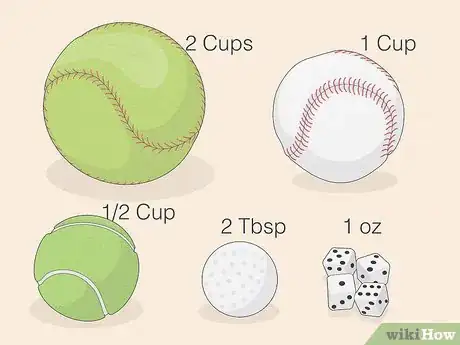

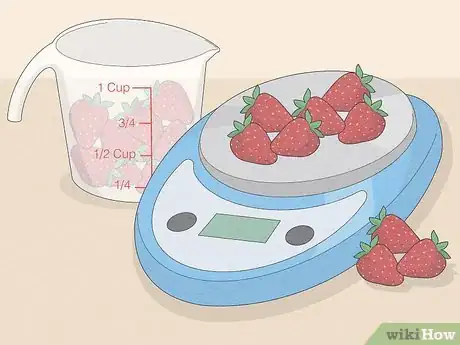




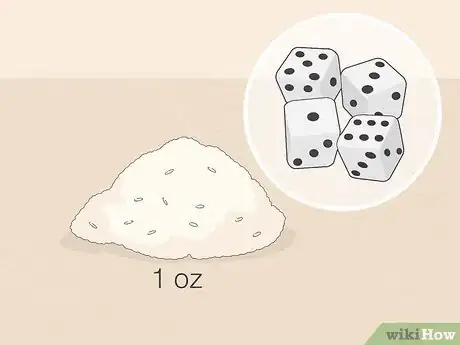

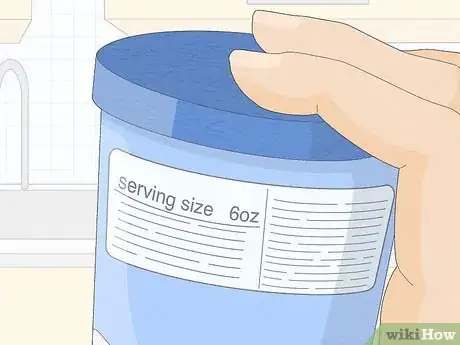








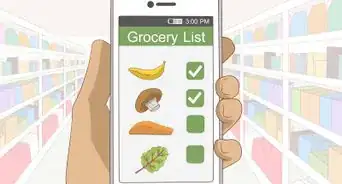


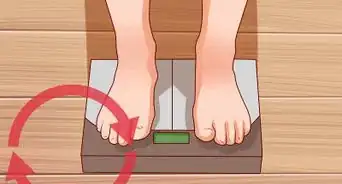
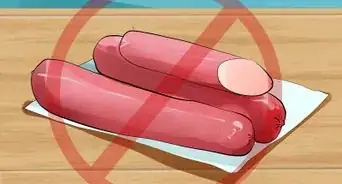
















































Medical Disclaimer
The content of this article is not intended to be a substitute for professional medical advice, examination, diagnosis, or treatment. You should always contact your doctor or other qualified healthcare professional before starting, changing, or stopping any kind of health treatment.
Read More...